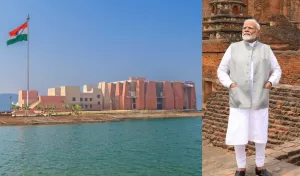The Wire Analysis, 1 April 2020
On Tuesday, the Centre turned two petitions pertaining to the welfare of migrant workers affected by the 21-day lockdown into an occasion to demand the Supreme Court give it control over the media’s coverage of the COVID-19 pandemic.
But though the Modi government wanted the media to be told that nothing could be published about the pandemic “without first ascertaining the true factual position from the … Central government,” the bench comprising Chief Justice of India, S.A. Bobde and Justice L. Nageswara Rao refrained from accepting this demand for prior censorship.
Nevertheless, there was enough in the order passed by the court in Alakh Alok Srivastava v Union of India to leave the government satisfied, especially its strange conclusion about the reason for the mass exodus of migrant workers seen in recent days. Relying on the submission made by solicitor general Tushar Mehta, the bench said:
“The migration of large number of labourers working in the cities was triggered by panic created by fake news that the lock down would continue for more than three months. Such panic-driven migration has caused untold suffering to those who believed and acted on such news. In fact, some have lost their lives in the process. It is, therefore, not possible for us to overlook this menace of fake news either by electronic, print or social media.”
A close look at the status report, filed by the Centre, however, shows that the government made no such claim. It is not clear whether the solicitor general made such a claim in his oral submission during the hearing through video-conferencing. If so, such an explanation ought to have been rejected by the court as there has been no substantiation of the claim so far.
In paragraph 41 of the status report, the Centre claimed: “However, unfortunately, due to some fake and/or misleading news/social media messages, a panic was created. At this juncture, only with a view to broadly bring to the notice of this Hon’ble Court, it may be pointed out that as per the last available census figures, there are approximately 4.14 crore who have migrated for the purpose of work/employment…. The present bare foot migration which has taken place consists of – on a very rough estimate – 5 to 6 lakhs persons across the country.”
In other words, the ‘panic’ being referred to here was not panic-induced migration but the fear that many more people were fleeing urban areas than was actually the case.
Elsewhere, in paragraph 48, the Centre claimed that it is “seriously considering and will shortly implement a system whereby the panic in the minds of these migrant workers is addressed keeping in view the socio-psycho local issue and they are offered requisite counselling.”
Indeed, this paragraph in the Centre’s status report should have made the court wonder whether the theory that fake news suggesting the lockdown would last for three months – and there is no evidence that such news was indeed circulating – could have triggered the bare foot migration of these workers. By the Centre’s own admission, the panic among migrant workers is rooted in socio-psychological factors, and not just some fake news relating to the duration of the lockdown.
In paragraph 56 of the status report, the Centre claimed:
“In an unprecedented situation of this nature, any deliberate or unintended fake or inaccurate reporting either in electronic, print or social media and, particularly in web portals has a serious and inevitable potential of causing panic in large sections of the society. Considering the very nature of the infectious disease which the world is struggling to deal with, any panic reaction by any section of the society based upon such reporting would not only be harmful for such section but would harm the entire nation.”
Using the fight against virus as the fig leaf, the Centre sought the apex court’s direction to legitimise official censorship thus:
“It is, therefore, in the larger interest of justice that when this Hon’ble Court has taken cognizance, this Hon’ble Court is pleased to issue a direction that no electronic/print media/web portal or social media shall print/publish or telecast anything without first ascertaining the true factual position from the separate mechanism provided by the Central Government as stated hereinabove.”
It is gratifying, however, that the court rejected the Centre’s plea for prior censorship of content in the media thus:
“In particular, we expect the media (print, electronic or social) to maintain a strong sense of responsibility and ensure that unverified news capable of causing panic is not disseminated. A daily bulletin by the Government of India through all media avenues including social media and forums to clear the doubts of people would be made active within a period of 24 hours as submitted by the Solicitor General of India. We do not intend to interfere with the free discussion about the pandemic, but direct the media refer to and publish the official version about the developments”.
But reading between the lines, the court’s order might be interpreted by the Centre as giving sanction for prior censorship of content in the media. This is because the court expressed its trust and expectation that all concerned, namely, state governments, public authorities, and citizens of this country will faithfully comply with the directives, advisories and orders issued by the Centre in letter and spirit in the interest of public safety.
The court drew attention to Section 54 of the Disaster Management Act, 2005 which provides for punishment to a person who makes or circulates a false alarm or warning as to disaster or its severity or magnitude, leading to panic. Such person shall be punished with imprisonment which may extend to one year or with fine.
It also underlined Section 188 of the Indian Penal Code, which imposes punishment for disobedience to an order promulgated by a public servant. “An advisory which is in the nature of an order made by the public authority attracts section 188 of the Indian Penal Code”, the bench made it clear. All these, however, should not make the Centre assume that it could direct prior censorship of content in the media under these provisions.
In other words, prior censorship of content in the media using these provisions would clearly be disproportionate to the problem of meeting the threat posed by such content, and the court could have explicitly made that clear, to avoid any misunderstanding of its order.
Unfortunately, the Supreme Court’s order attributing the panic among migrant labourers heading to the villages from the cities to non-existent media reports suggesting prolonged lockdown for three months, amounts to absolving the Centre any responsibility.
Indeed, if the multiple interviews which the migrant labourers have given to the media is any indication, they chose to return to their villages because the prime minister’s address to the nation hardly sought to allay their fears and apprehensions even during the 21-day lock down, let alone the imaginary panic spread about its lasting for three months.




